Speedmaster Hesalite vs Sapphire
A horological icon, the OMEGA Speedmaster presents a crucial choice for watch enthusiasts: Hesalite or Sapphire crystal? This decision goes beyond mere aesthetics, touching on history, durability, and personal preference. Our comprehensive comparison delves into the nuances of each option, equipping you with the knowledge to select the perfect Speedmaster for your wrist.
Historical Significance

The Speedmaster's journey to becoming the "OMEGA Moonwatch" is inextricably linked to its Hesalite crystal. When NASA sought a watch capable of withstanding the rigors of space travel, the Speedmaster's Hesalite emerged victorious. This acrylic material proved its mettle during the Apollo missions, resisting extreme temperatures and pressure changes while offering superior shatter resistance.
In the years following the moon landings, OMEGA recognized the growing demand for more scratch-resistant materials. Enter sapphire crystal - a modern marvel in watchmaking. This evolution marked a new era for the Speedmaster, blending cutting-edge materials with its storied legacy. Today, both options coexist, each catering to different preferences within the Speedmaster lineup.
The introduction of sapphire crystal models allowed OMEGA to showcase the Speedmaster's intricate movement through transparent casebacks. This move appealed to enthusiasts who appreciate the technical artistry of mechanical watchmaking, while still maintaining the iconic Speedmaster design.
Material Composition and Manufacturing
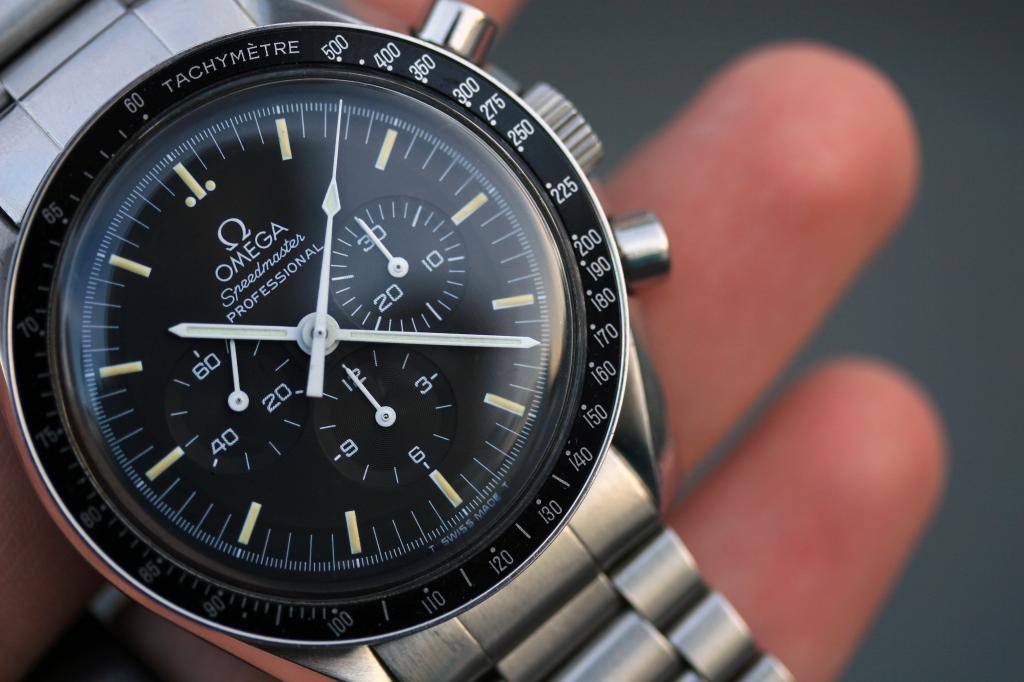
The choice between Hesalite and Sapphire isn't just about looks - it's a decision rooted in complex materials science and manufacturing processes. Each crystal type brings unique properties to the Speedmaster, influencing everything from its appearance to its performance under various conditions. Let's explore the composition and creation of these two distinctive materials.
Hesalite
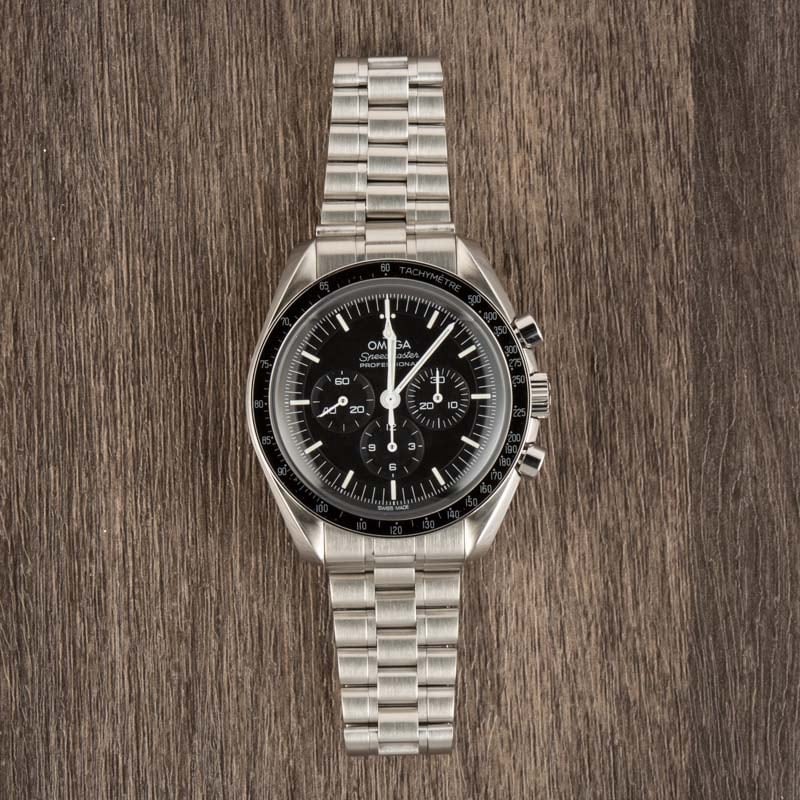
Hesalite, an advanced form of acrylic, stands out for its exceptional malleability and optical clarity. This polymer-based material allows watchmakers to achieve the Speedmaster's iconic domed crystal shape with relative ease. The manufacturing process involves carefully heating and molding the Hesalite to achieve the perfect curvature, a technique that has been refined since the watch's inception.
One of Hesalite's key advantages is its low density, contributing to the overall lightness of the watch. Additionally, its unique molecular structure provides a degree of elasticity, allowing it to absorb impacts that might shatter more rigid materials. This property made Hesalite the ideal choice for NASA's space missions, where safety was paramount.
Sapphire

Sapphire crystal, despite its name, is not extracted from natural gemstones. Instead, it's a lab-created form of corundum, second only to diamond in hardness. The manufacturing process, known as the Verneuil method, involves melting and crystallizing aluminum oxide at extremely high temperatures.
The resulting material is then cut, shaped, and polished to exacting specifications. This labor-intensive process contributes to the higher cost of sapphire crystal Speedmasters. However, the payoff is a virtually scratch-proof surface that maintains its clarity for decades. Modern Speedmasters often feature anti-reflective coatings on the sapphire, further enhancing its optical properties.
Visual and Aesthetic Differences

The visual distinction between Hesalite and Sapphire Speedmasters extends far beyond a simple matter of clarity. Each material imparts a unique character to the watch, influencing how light interacts with the dial and how the timepiece presents itself on the wrist.
Hesalite's domed profile creates a warm, vintage aesthetic that many purists adore. This curvature softens the edges of the crystal, creating a seamless flow from the bezel to the dial. Under certain lighting conditions, Hesalite can produce a subtle, milky edge that some collectors find charming - a throwback to the watch's space-age heritage.
Sapphire, in contrast, offers unparalleled clarity and a more contemporary look. Its flat surface with beveled edges provides a crisp, modern aesthetic that emphasizes the watch's technical precision. However, this clarity comes with a trade-off: the infamous "milky ring" effect. In certain angles, sapphire can create a halo-like reflection around the dial's edge - a quirk that some enthusiasts embrace and others find distracting.
The choice between Hesalite and Sapphire can subtly alter the overall proportions of the Speedmaster. Hesalite's dome adds a touch of height, while sapphire's flatter profile can make the watch appear slightly slimmer. These nuances, while small, contribute to the distinct personalities of each variant.
Ultimately, the visual impact of Hesalite versus Sapphire is deeply personal. Some collectors insist on the warm, vintage charm of Hesalite for its historical accuracy. Others prefer the pristine clarity and modern feel of sapphire. Your choice will depend on whether you prioritize the Speedmaster's heritage or its evolution as a contemporary timepiece.
Durability and Maintenance
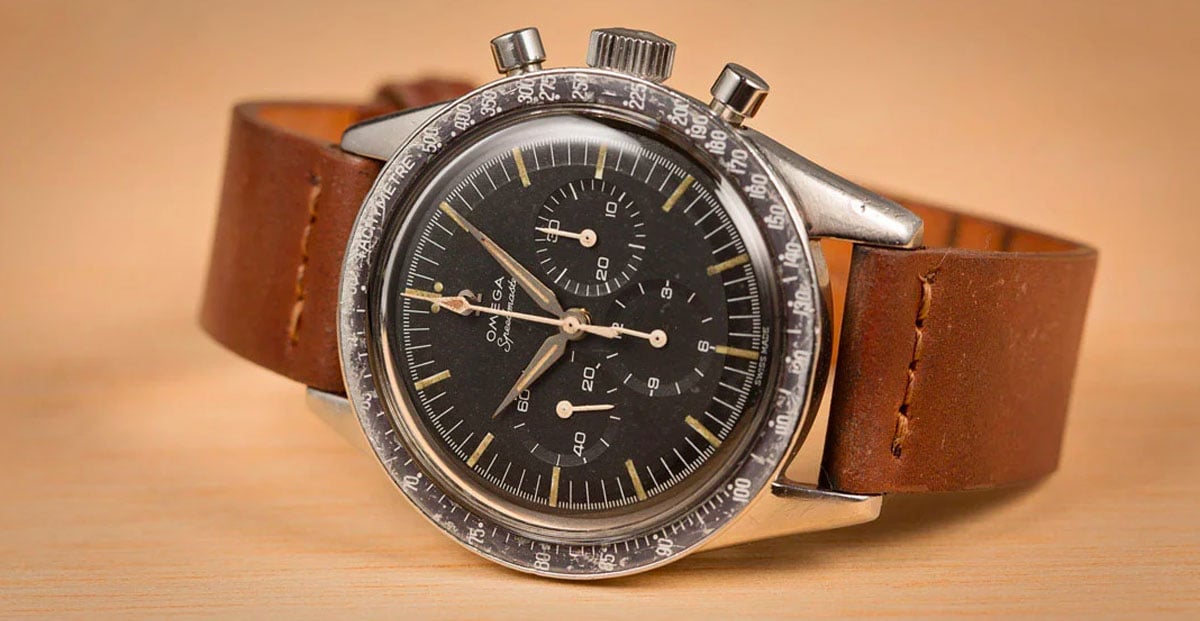
When it comes to longevity and care, Hesalite and Sapphire crystals present distinct challenges and advantages. Understanding these differences is crucial for maintaining your Speedmaster's appearance and functionality over time. Let's break down the key aspects of durability and maintenance for both materials.
Scratch Resistance
Hesalite's softer nature makes it more susceptible to scratches from everyday wear. You'll likely notice fine scratches and scuffs accumulating over time, especially if you're not mindful of potential hazards. However, this vulnerability comes with a silver lining – minor scratches on Hesalite can often be easily buffed out using specialized polishing compounds.
Sapphire, boasting a hardness of 9 on the Mohs scale, is nearly impervious to scratches from typical daily activities. This durability ensures your Speedmaster's crystal remains clear and unblemished for years, even under heavy use. The trade-off is that if a sapphire crystal does somehow get scratched, it's much more challenging to repair without professional intervention.
Impact Resistance
Hesalite's flexibility gives it a significant edge in impact resistance. When subjected to a sharp blow, Hesalite is more likely to deform or crack rather than shatter. This property was crucial for NASA, as it prevented potentially dangerous shards of crystal in zero-gravity environments. For everyday wear, it means your watch is less likely to be rendered unusable by an accidental impact.
Sapphire's hardness is a double-edged sword when it comes to impacts. While it resists scratches admirably, its rigidity makes it more prone to chipping or shattering under severe stress. A hard enough blow in just the right spot can cause a sapphire crystal to crack or even shatter completely – a more catastrophic failure mode than Hesalite's tendency to crack without fragmenting.
Maintenance Tips for Both Materials
Regardless of your choice, proper care will extend the life of your Speedmaster's crystal. For Hesalite, invest in a quality polishing cloth and compound. Regular, gentle polishing can keep minor scratches at bay and maintain that vintage clarity. Avoid harsh chemicals that might damage the acrylic.
Sapphire requires less frequent intervention, but it's not maintenance-free. Use a soft, lint-free cloth to keep the crystal clean and free from oils that can affect its clarity. While scratch-resistant, sapphire isn't impervious to chips, so handle your watch with care around hard surfaces.
For both types, consider having your watch serviced periodically by a professional. They can assess the crystal's condition to keep your Speedmaster in top form and perform any necessary maintenance or replacement.
Caseback Options and Display

The crystal choice on your Speedmaster influences more than just the front view – it also determines what you'll see (or not see) when you flip the watch over. This aspect of the Hesalite vs. Sapphire debate often sways collectors in one direction or the other.
Hesalite models typically feature a solid caseback, usually adorned with the iconic Seahorse logo and relevant engravings. This classic design harks back to the original Moonwatch, emphasizing the Speedmaster's role in space exploration. The solid back also provides additional protection for the movement, a consideration that appeals to those who prioritize robustness over visual access to the mechanics.
Sapphire crystal Speedmasters often come with what enthusiasts affectionately call the "Sapphire Sandwich" configuration. This features a transparent caseback, also made of sapphire, offering a window into the watch's beating heart. For many, the ability to admire the beautifully finished Caliber 1861 or OMEGA 3861 movement is a major selling point, adding an extra dimension of appreciation for the Speedmaster's craftsmanship.
The transparent caseback isn't just about aesthetics - it allows owners to observe the movement's operation and potentially spot any issues early on. However, this visibility comes at the cost of the iconic Seahorse engraving, which some purists consider an integral part of the Speedmaster experience.
It's worth noting that OMEGA has produced some limited edition models that blend these approaches, offering Hesalite crystals on the front with sapphire display backs. These rare pieces offer a compromise for those torn between tradition and mechanical admiration.
Your choice between a solid or display caseback often comes down to personal preference. Do you value the historical accuracy and ruggedness of a fully sealed watch? Or does the allure of watching your Speedmaster's mechanical dance win you over? This decision can be as significant as the front crystal choice in defining your Speedmaster experience.
Weight and Wearability
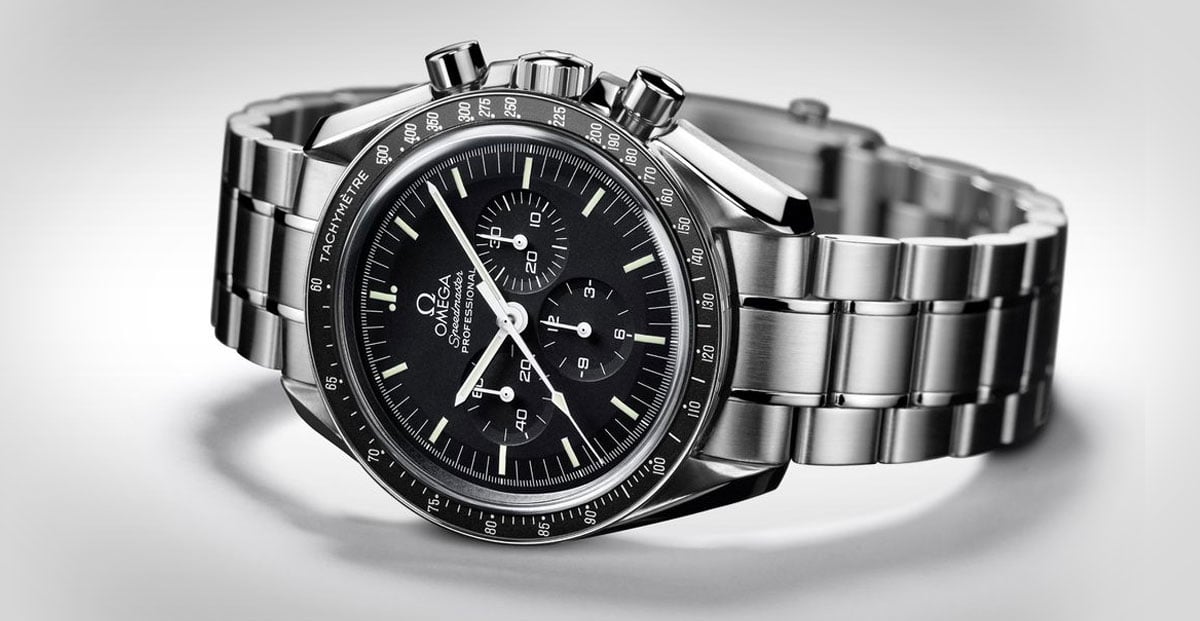
The choice between Hesalite and Sapphire affects more than just visual and protective properties - it also influences how the Speedmaster feels on your wrist. Weight distribution and overall comfort are crucial factors in daily wear, especially for a watch with the Speedmaster's substantial presence.
Hesalite crystals contribute to a lighter overall package. The reduced weight at the front of the watch creates a more balanced feel on the wrist, which many wearers find comfortable for extended periods. This lightness can be particularly appreciated if you're using the Speedmaster for its intended purpose as a chronograph during physical activities.
Sapphire models, while only marginally heavier, do have a noticeably different presence. The added weight of the crystal, combined with the often-present display caseback, gives these versions a more substantial feel. Some enthusiasts appreciate this heft, viewing it as a sign of the watch's quality and durability. Others find that it makes the watch more noticeable on the wrist throughout the day.
Your personal preferences and lifestyle play a significant role in this aspect of the decision. If you prefer a watch that nearly disappears on your wrist, the Hesalite model might be your best bet. For those who enjoy feeling the presence of their timepiece as a reminder of its heritage and craftsmanship, the sapphire version could be more satisfying.
Cost Implications
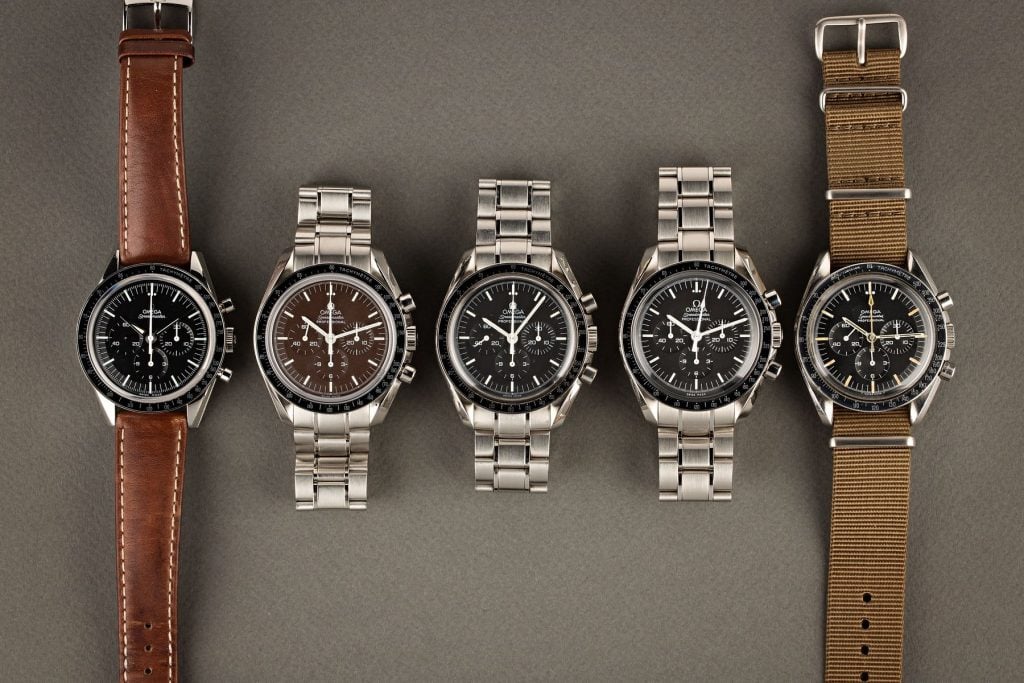
When comparing Hesalite and Sapphire Speedmasters, the price difference is often a significant factor for potential buyers. Understanding the reasons behind this disparity can help you make an informed decision that balances your budget with your preferences.
Hesalite models typically come with a lower initial price tag. This is partly due to the lower cost of the material itself and the less complex manufacturing process. The simplicity of the solid caseback also contributes to keeping costs down. For many, this accessibility makes the Hesalite Speedmaster an attractive entry point into luxury watch ownership.
Sapphire crystal Speedmasters command a premium, often ranging from several hundred to over a thousand dollars more than their Hesalite counterparts. This higher cost reflects the more expensive raw materials, the intricate manufacturing process, and the additional sapphire used for the display caseback. The anti-reflective coatings applied to many sapphire models also add to the overall expense.
It's important to consider long-term costs as well. While Hesalite crystals are more prone to scratches, they're also easier and less expensive to polish or replace. Sapphire, while highly scratch-resistant, can be significantly more costly to replace if it does sustain damage.
Ultimately, the price difference often comes down to personal valuation. Are the scratch resistance and movement visibility of the sapphire model worth the premium to you? Or does the historical accuracy and lower entry point of the Hesalite version align better with your priorities and budget?
User Preferences and Feedback

The Hesalite vs. Sapphire debate among Speedmaster enthusiasts is as lively as ever, with passionate advocates on both sides. Understanding the reasons behind these preferences can offer valuable insights as you make your own decision.
Hesalite devotees often cite the crystal's historical authenticity as a primary draw. For them, wearing a watch that's essentially unchanged since the Apollo missions provides a tangible connection to the Speedmaster's storied past. The warm, vintage aesthetic of Hesalite also appeals to those who appreciate a more classic look.
Many Hesalite fans also point to the crystal's unique optical properties. The slight distortions at extreme angles and the way it interacts with light create what some describe as a more "alive" appearance. The ease of maintaining Hesalite is another frequently mentioned advantage, with owners appreciating the ability to quickly buff out minor scratches.
Sapphire proponents, on the other hand, often prioritize durability and clarity. The virtually scratch-proof nature of sapphire is a significant selling point for those who want their Speedmaster to maintain a pristine appearance with minimal effort. The modern, high-tech feel of sapphire also aligns well with those who view the Speedmaster as a contemporary luxury item rather than a historical artifact.
The ability to view the movement through a sapphire caseback is frequently cited as a major draw. Many owners report a deeper appreciation for their watch's mechanical artistry after being able to observe its inner workings.
Testimonials from long-term owners often highlight how these initial preferences play out in real-world use. Hesalite owners frequently mention the satisfaction of wearing a watch that accumulates character over time, with each small scratch telling a story. Sapphire owners, in contrast, often express appreciation for their watch's ability to look virtually new even after years of wear.
Common Issues and Practical Solutions
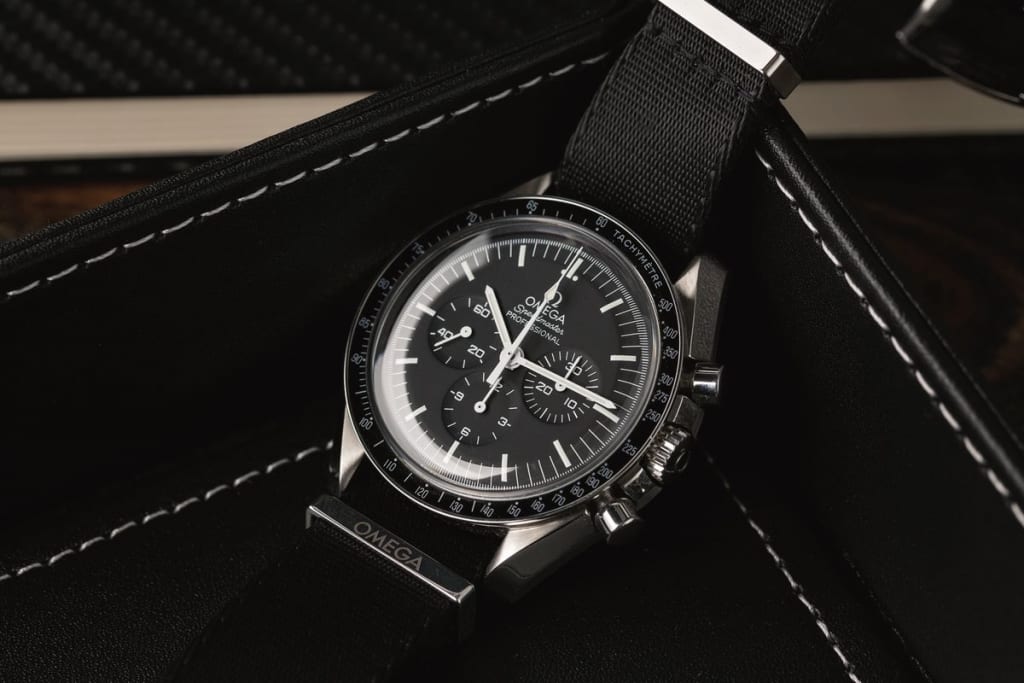
Both Hesalite and Sapphire crystals come with their own set of potential issues, but understanding these challenges - and their solutions - can help you maintain your Speedmaster in top condition for years to come.
Hesalite's primary concern is its susceptibility to scratches. While minor scuffs can often be buffed out at home, deeper scratches may require professional attention. Regular polishing can keep your crystal clear, but be cautious not to overdo it - excessive polishing can gradually alter the crystal's shape over time.
Another issue sometimes encountered with Hesalite is the formation of a "milky ring" around the edge of the crystal. This phenomenon, caused by the interaction between the crystal and the case, is generally considered normal and doesn't affect functionality. Some collectors even view it as a badge of authenticity for well-worn Speedmasters.
Sapphire crystals, while highly scratch-resistant, aren't without their quirks. The most common complaint is internal reflections, particularly noticeable in bright conditions. This can sometimes make the dial harder to read at certain angles. Anti-reflective coatings help mitigate this issue, but they can wear off over time, especially on the exterior surface.
While rare, sapphire crystals can chip if subjected to a sharp, localized impact. Unlike Hesalite, which can often be polished, a chipped sapphire usually requires complete replacement – a more costly proposition.
For both types, prevention is key. Using a watch roll or box when not wearing your Speedmaster can prevent accidental impacts. Being mindful of your surroundings and avoiding unnecessary risks (like wearing your watch during home improvement projects) can go a long way in preserving your crystal, regardless of material.
Making the Decision
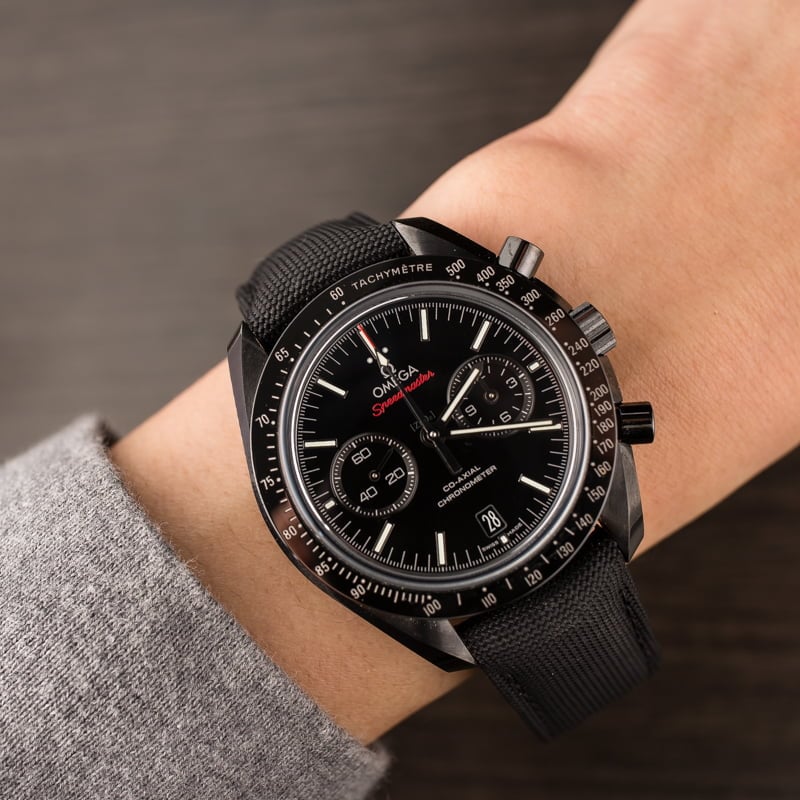
Choosing between Hesalite vs Sapphire for your Speedmaster ultimately comes down to balancing various factors against your personal preferences and lifestyle. Let's recap the key considerations to help guide your decision.
Historical accuracy favors Hesalite, offering the closest experience to the original Moonwatch. If you're drawn to the Speedmaster primarily for its space heritage, this might be the deciding factor. On the flip side, Sapphire represents an important page in the OMEGA Speedmaster history, showcasing how the brand has adapted this iconic design for the modern era.
Consider your daily activities and wearing habits. If you work in an environment where your watch might encounter frequent bumps or abrasions, Sapphire's superior scratch resistance could be invaluable. However, if you're comfortable with a watch that might pick up some character over time, or if you enjoy the ritual of occasional maintenance, Hesalite could be more satisfying.
Don't underestimate the importance of the tactile and visual experience. The warmer look of Hesalite versus the crisp clarity of Sapphire can evoke different emotional responses. Similarly, the weight difference, while subtle, can impact your long-term satisfaction with the watch.
Ultimately, there's no universally "correct" choice between Hesalite and Sapphire. The best decision is the one that aligns with your priorities, whether that's historical fidelity, modern durability, or a particular aesthetic. Remember, both options house the same legendary Speedmaster movement - you're choosing the window through which you'll admire it.
Conclusion
The Hesalite vs. Sapphire debate encapsulates the Speedmaster's unique position in the watch world – a timepiece that simultaneously honors its history and embraces modern innovation. Both crystals offer distinct advantages, each appealing to different aspects of what makes the Speedmaster special.
Hesalite connects you directly to the Moonwatch legacy, offering a wearing experience virtually unchanged since the Apollo era. Its warm aesthetics and character-building nature resonate with those who value the Speedmaster's storied past. Sapphire, meanwhile, represents OMEGA's commitment to evolving this iconic design, offering unparalleled clarity and durability for the modern wearer.
Your choice ultimately reflects your personal relationship with the Speedmaster legend. Do you see yourself as a custodian of horological history, or are you drawn to the fusion of heritage and cutting-edge materials? There's no wrong answer – only the one that resonates most with you.
For those ready to embark on their Speedmaster journey, Bob's Watches offers an unparalleled selection of both Hesalite and Sapphire models. Our curated collection of pre-owned Speedmasters ensures you'll find the perfect match for your preferences and budget. Visit our website to explore our range of OMEGA Speedmaster for sale, and take the next step in owning a piece of watchmaking history.
With over two decades of experience in the luxury watch industry, the Bob's Watches Editorial Team stands at the forefront of watch expertise and insight. Our team, composed of seasoned watch enthusiasts, skilled horologists, and knowledgeable industry insiders, is dedicated to bringing you the latest and most accurate information in the world of luxury timepieces. We pride ourselves on our meticulous attention to detail and our unwavering commitment to authenticity. Our editorial content is a reflection of our passion for luxury watches and our dedication to providing our readers with comprehensive, unbiased, and up-to-date information. Our expertise spans a wide range of topics, including in-depth reviews of the latest models, historical retrospectives of iconic timepieces, and insightful analyses of market trends. We are also renowned for our detailed guides on watch maintenance and investment advice, making us a trusted resource for both seasoned collectors and new enthusiasts alike. As thought leaders in the watch industry, we understand the importance of staying ahead of the curve. That's why we continually update our knowledge and skills, ensuring that our readers receive the most current and relevant information. Whether you're seeking advice on your next luxury watch purchase or looking to deepen your understanding of watch craftsmanship, the Bob's Watches Editorial Team is here to guide you.